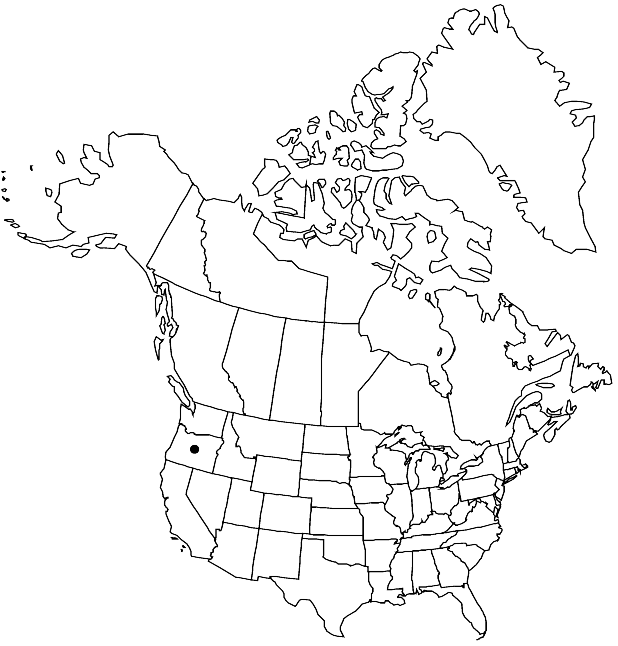familyBrassicaceae
genusThelypodium
speciesThelypodium howellii
subspeciesThelypodium howellii subsp. spectabilis
Thelypodium howellii subsp. spectabilis
Contr. Gray Herb. 204: 116. 1973.
Basionym: Thelypodium howellii var. spectabilis M. Peck Torreya 32: 150. 1932
Treatment appears in FNA Volume 7. Treatment on page 732.
Basal leaves: blade oblong-lanceolate to oblong, margins entire or repand. Flowers: petals usually spatulate, rarely oblanceolate, (1.2–) 1.5–2.7 (–3) mm wide; median filaments distinct. Fruits (1.8–) 3–6.5 (–8.2) cm. 2n = 26.
Phenology: Flowering Jun–Jul.
Habitat: Desert shrub communities, alkaline ground
Discussion
Of conservation concern.
Subspecies spectabilis is known only from Baker, Harney, Malheur, and Union counties. It is in the Center for Plant Conservation’s National Collection of Endangered Plants.
Selected References
None.
Lower Taxa
None.
"elongated" is not a number."thick" is not a number."dm" is not declared as a valid unit of measurement for this property."dm" is not declared as a valid unit of measurement for this property.
... more about "Thelypodium howellii subsp. spectabilis"
hypogynous +
coiled +
dehiscing +
petiolate +
opposite +
straight +
stout +
absent +
not flattened +
oblong-lanceolate;oblong +
absent +
woody +
sessile +
well-developed +
distinct +
absent +
differentiated +
oblique +
3[2]-fid +
absent +
Oreg. +
absent +
tetradynamous +
purple;lavender;purple;lavender;white +
bisexual +
stipitate +
divaricate +
straight +
dehiscent +
distinct +
absent +
racemose +
pungent +
watery +
absent +
connivent +
spreading +
decurrent +
repand;entire +
distinct +
absent +
1-seeded +
prominent +
confluent +
lateral +
variable +
eseptate +
parietal +
apical +
22;40 +
decussate +
absent +
hypogynous +
alternate +
9mm;16.5mm +
absent +
rudimentary +
2-carpellate +
3-colpate +
Contr. Gray Herb. +
1973 +
ebracteate +
divaricate +
coiled +
accumbent +
conduplicate +
incumbent +
tiny +
indistinct +
rounded +
slender +
mucilaginous +
not winged +
uniseriate +
distinct +
? (?) +
erect +
lateral +
complete +
absent +
reduced +
longitudinal +
tetradynamous +
equal +
subequal +
branched +
decumbent +
erect +
absent +
persistent +
distinct +
absent +
obsolete +
Thelypodium howellii subsp. spectabilis +
Thelypodium howellii +
subspecies +
stellate +
absent +
forked +
dehiscing +
glabrous +
anastomosing +
not scapose +
eglandular +
submerged +
